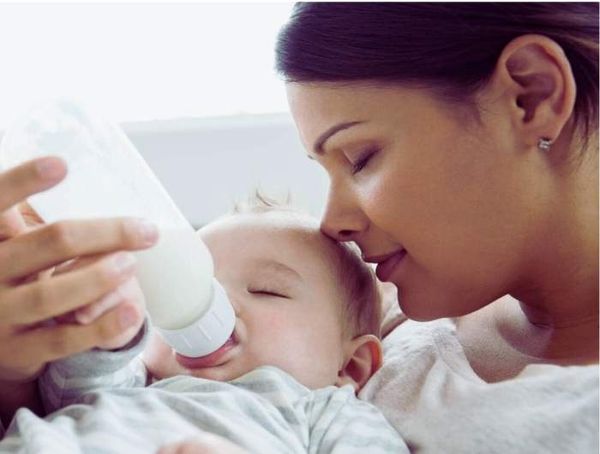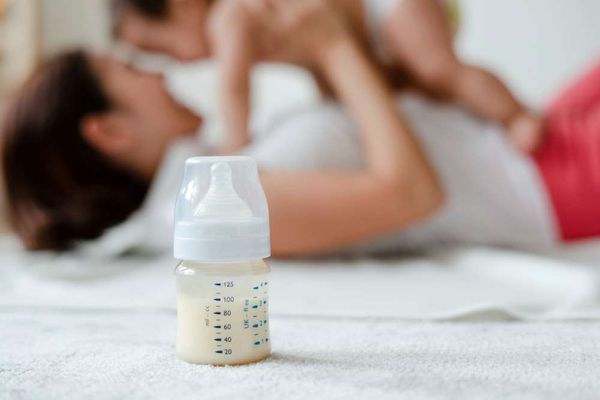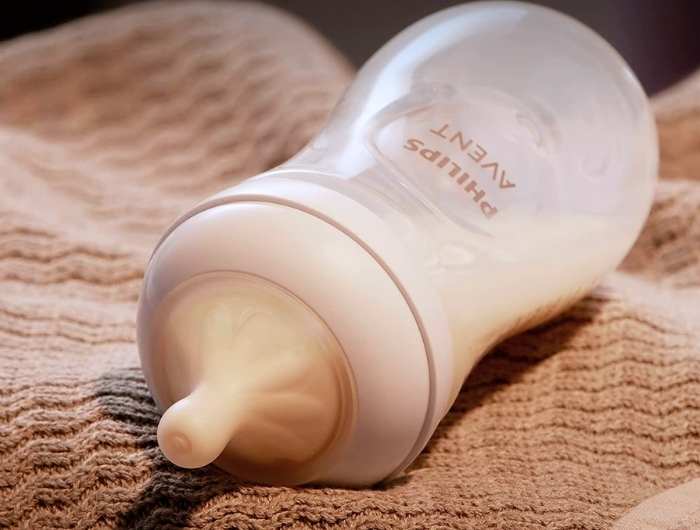For guide on Paced Bottle Feeding and more, continue reading.
Bottle-feeding your baby can be a wonderful way to bond and nourish your little one. Whether you use formula or breast milk, you want to make sure you choose the right bottle and use the right technique for your baby's age and needs. In this blog post, we will share some tips and advice on how to use the best baby bottles effectively and safely. We will also go into detail about how old should a baby stop using a bottle.
Ages For Bottle Feeding
You can start bottle feeding your baby from birth, if you choose not to breastfeed or if you need to supplement your breast milk. Some babies may prefer one type of nipple over another, so you may need to try different bottles (like the best baby bottles for gas) until you find the one that works best for your baby. You can also switch between breast and bottle feeding, but it is recommended to wait until your baby is at least four weeks old and has established a good latch on the breast.
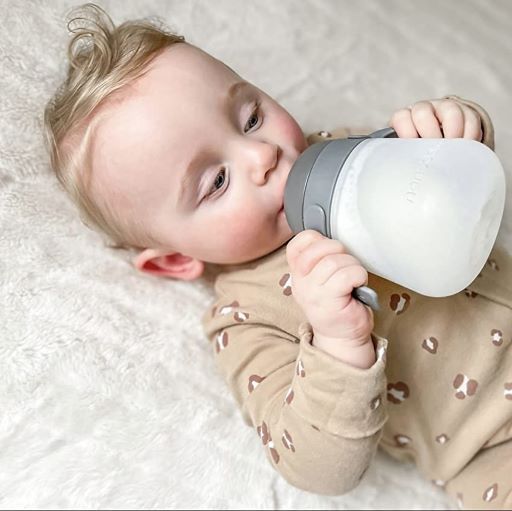
As your baby grows, you will need to adjust the amount and frequency of bottle feeding. Here are some general guidelines for different ages:
- Newborns: Feed 2 to 3 ounces (60 to 90 ml) every 2 to 3 hours.
- 1 month: Feed 4 ounces (120 ml) every 4 hours.
- 2 months: Feed 5 ounces (150 ml) every 4 hours.
- 3 months: Feed 6 ounces (180 ml) every 4 hours.
- 4 months: Feed 6 to 8 ounces (180 to 240 ml) every 4 to 6 hours.
- 6 months: Feed 8 ounces (240 ml) every 4 to 6 hours.
You can also introduce solid foods at around 6 months but don't replace bottle feeding completely until your baby is at least one year old.
Nipple Confusion
Nipple confusion is when your baby has difficulty switching between a bottle and a breast. Babies usually use different techniques to drink from a breast and a bottle. They are born with an instinct for breastfeeding but sometimes appear to become confused after the introduction of a pacifier or bottle.
The symptoms of nipple confusion in babies include:
- Struggling to latch onto the breast
- Crying at feeding times
- Changes in sucking patterns during breastfeeding.
If your baby is experiencing nipple confusion, there are some things you can do to help your baby. First, try to avoid introducing a bottle or pacifier until breastfeeding is well established. If you do need to introduce a bottle, try using one that has a slow-flow nipple. You can also try different breastfeeding positions, such as the football hold or side-lying position.
Remember, every baby is different, so what works for one may not work for another. Be patient and keep trying different things until you find what works best for you and your baby. You got this!
Methods For Bottle Feeding A Baby
When you bottle feed your baby, you want to make sure you hold them in a comfortable and secure position. You can cradle them in your arms, or sit them on your lap with their head slightly elevated. You can also use a pillow or a boppy to support them. Read our guide on how to prepare and clean baby bottles.
Traditional method
This is the most common way to bottle-feed a baby. Hold your baby in a semi-upright position in your arms, with their head supported by your elbow. Tilt the bottle slightly so that the nipple is always filled with milk and there is no air in it. Let your baby suck at their own pace and take breaks as needed. Burp your baby halfway through the feeding and at the end.
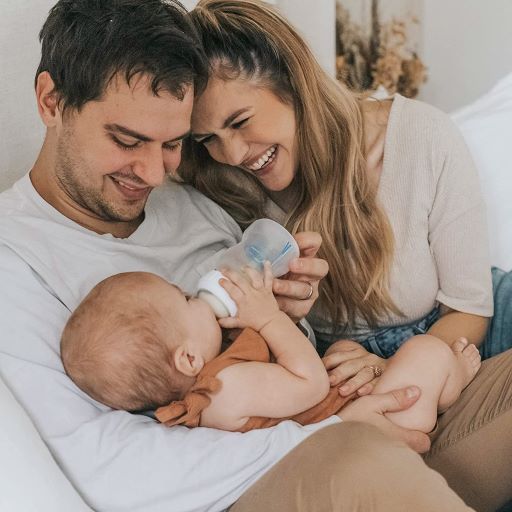
Tips
To avoid air bubbles and gas, you should tilt the bottle so that the nipple is always filled with milk. You can also burp your baby halfway through the feeding and at the end. To burp your baby, gently pat or rub their back while holding them upright or over your shoulder.
Never prop the bottle on a pillow or leave your baby alone with a bottle. This can cause choking, ear infections, tooth decay, and overfeeding.
Never heat the bottle in a microwave, as this can create hot spots that can burn your baby's mouth. Instead, warm the bottle in a bowl of warm water or under running water.
Always check the temperature of the milk by dripping some on your wrist before feeding your baby. It should feel warm but not hot.
Wash and sterilize the bottles and nipples after each use. You can use hot soapy water or a dishwasher, and boil them in water for five minutes or use a sterilizer.
Paced Bottle Feeding
Paced bottle feeding is a way of feeding your baby that follows their cues. It puts them in control of how much milk they need, and it allows for breaks in a feeding session. Paced bottle feeding is beneficial because it can prevent overfeeding, and reduce gassiness and spit-up.
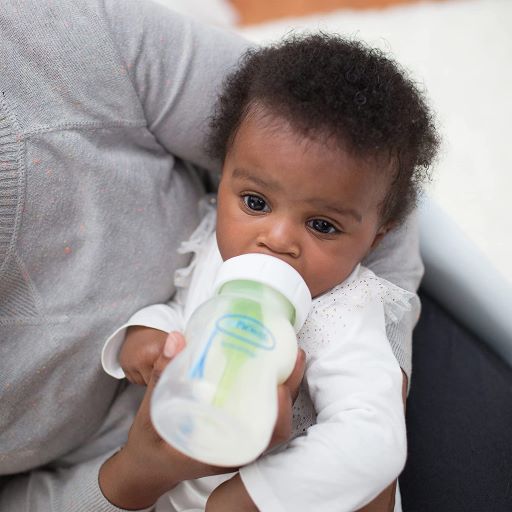
Step-by-step Guide To Paced Bottle Feeding
- Hold your baby in a semi-upright position, supporting its head. It is important that your baby can breathe and swallow comfortably.
- Use a nipple with a slow flow.
- Rub the nipple along your baby’s lips to encourage them to latch onto the bottle nipple.
- Hold the bottle parallel to the floor (horizontally), allowing your baby to latch onto the nipple without milk flowing out too quickly.
- Let your baby take breaks during the feeding session, by removing the nipple from their mouth, and allowing them to rest for a few seconds before continuing.
- Pay attention to your baby’s fullness cues, such as turning their head away from the bottle, slowing down their sucking, or falling asleep.
- Let your baby take the lead during feedings, and never force them to finish a bottle if they are not hungry.
- Remember to always hold your baby during feedings, and never prop up a bottle. This can cause choking, ear infections, and tooth decay.
When Should Babies Stop Using Bottles
According to the American Academy of Pediatrics, babies should be weaned off the bottle by 12 months of age. This is because prolonged bottle use can cause several problems for your child's health and development. Some of these problems are:
Extra calories: Bottles can provide more calories than your baby needs, especially if you fill them with juice, milk, or other sweetened drinks. This can lead to obesity and tooth decay.
Damage tooth enamel: The natural sugars in breast milk or formula can damage your child's teeth if they are exposed to them for long periods of time. This can cause cavities and infections. Teeth brushing is very important for healthy enamel.
Delayed speech and oral skills: Bottles can interfere with your baby's ability to develop the muscles and coordination needed for speech and eating solid foods. This can affect their language and social skills.
To avoid these problems, start introducing your baby to a sippy cup around 6 months of age. Offer them water or diluted juice in the cup, and gradually reduce the amount of bottle feedings. By 9 months, you can start giving them cow's milk in the cup instead of infant formula or breast milk.
If they have problems with digesting cows milk you can use goat's milk as an alternative. By 12 months, aim to eliminate all bottle feedings and replace them with sippy cups and solid foods.
Tips To Make The Transition Easier
Choose a sippy cup that is easy to hold and has a soft spout or straw. You can also try different types of cups until you find one that your baby likes.
Offer the sippy cup at regular times, such as during meals or snacks. You can also let your baby play with the cup and explore it on their own. Sitting them in a high chair might work also.
Be patient and supportive. Some babies may resist the change and cling to their bottle habit. You can praise your baby for trying the cup and offer comfort if they get frustrated. You can also involve them in the weaning process by letting them choose their own cup or decorate it with stickers. For some children, the gradual elimination simply won't work, and you may have to try going cold turkey.
Don't force or bribe your baby to use the cup. This can create a negative association and make them more resistant. Instead, follow their cues and go at their own pace.
Remember that every baby is different and there is no one right way to wean them off the bottle. The most important thing is to make the transition a positive and gradual experience for both you and your baby.
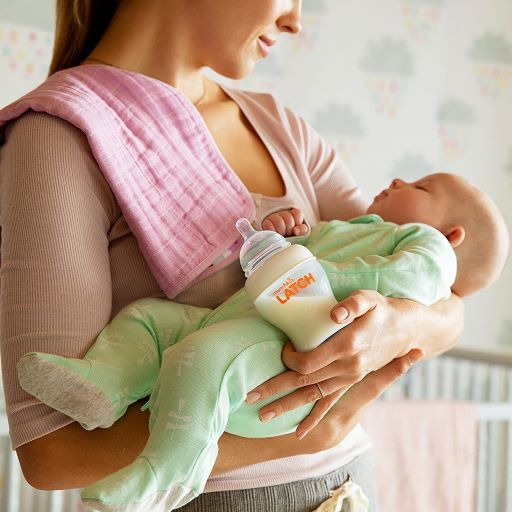
Conclusion
In conclusion, bottle-feeding your baby can be a rewarding and enjoyable experience for both of you. By following these tips and advice, you can ensure that you use the right bottle and technique for your baby's age and needs. You can also create a loving and nurturing bond with your baby as you feed them. And when it is time to wean them off the bottle you can come back to this post and read all about tips on how to do it.
Thank you for reading Mother Bear Reviews, your favorite parenting blog!



